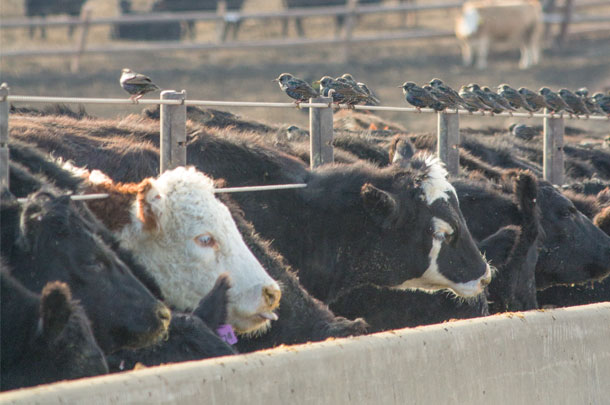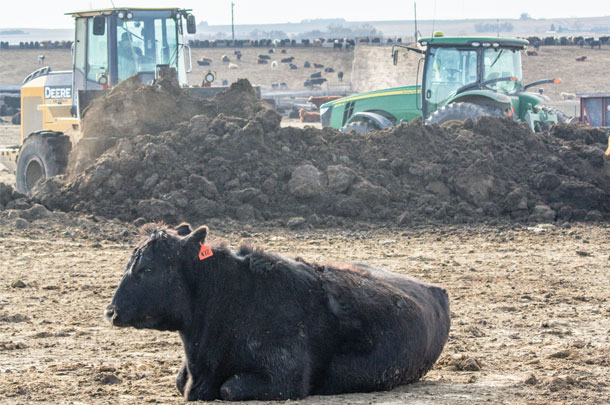While this movement is probably most common for feeder cattle as they travel from their birth farm or ranch to the feedlot, it is also not uncommon for breeding cattle to change locations at least once or twice.
For much of the industry, not a lot of thought is given to this process. It is commonplace and has been for years. But as time passes and we learn better management skills and ways to improve performance, greater consideration is given to methods to improve how we manage cattle, reduce stress and improve health, gains and reproduction.
One concern specifically is “biosecurity.” The word itself simply implies a group of methods that can be employed ensuring that an operation will be safe from issues compromising its ability to produce quality, safe products. This applies not only to animals brought onto the farm but also to animals already there.
Using the term biosecurity has, to a large degree, applied to a focus of keeping our food supply safe. This extends not only to livestock operations but to our homes and families as well. Producers need to keep three things in mind:
- Biosecurity measures are not restricted to large operations.
- Biosecurity is not only a matter of reducing the possibility of a terrorist attack, although that tends to be in the forefront of our thinking these days. It is also related to measures taken to reduce the possible transference of disease on and off livestock operations.
It involves anything that keeps operations safe from production interruption and keeps the products you produce uncompromised.
- Biosecurity must become a state of mind. All persons involved with the operation must think about how any event may affect biosecurity.
As we move animals off and onto the farm, ranch, stocker or preconditioning operation or feedyard, the basic overall goal is to stop transmission of disease-causing agents. To a large degree, this is managed by preventing, minimizing or controlling cross-contamination of body fluids between animals, animals and feed or water and animals and equipment that may directly or indirectly contact the animals on your operation.
Good management practices are designed to prevent the spread of disease by minimizing the movement of biologic organisms and their vectors (viruses, bacteria, rodents, flies, etc.) onto and within your operation.
Biosecurity can be very difficult to consistently maintain because the inter-relationships among management, biologic organisms and biosecurity are generally very complex. While developing and maintaining a sound, consistent program can be difficult, in the long term it is the cheapest, most effective means of disease control available, and no disease prevention program will work without it.
How is biosecurity and health compromised?
We generally understand how infectious diseases can be spread between operations. Unfortunately, in many cases, this is taken for granted. So let’s review a bit. Compromise can occur by:

- Introduction of diseased cattle or healthy cattle potentially incubating or carrying a disease
- Introduction of healthy cattle who have recovered from disease but are now carriers
- Vehicles, equipment, clothing and shoes of people who move between herds
- Contact with inanimate objects contaminated with disease organisms
- Carcasses of dead cattle not properly disposed
- Feedstuffs, especially high-risk feedstuff, which could be contaminated with feces
- Impure or contaminated water
- Manure handling and manure and dust in the air
- Other animals (horses, dogs, cats, wildlife, rodents, birds and insects)
Components for management
Biosecurity has three major components: isolation, traffic control and sanitation. When effectively managed, these components meet the primary biosecurity objective of preventing or minimizing cross-contamination between animals, animals and feed, and animals and equipment.
Isolation
When new animals are brought to the operation, as best as possible they should be isolated. This prevents contact between animals within a controlled environment. The most important step in disease control is to minimize commingling of cattle. This includes all new purchases as well as commingling between established groups of cattle.
Even in operations that have high cattle turnover, such as feedlots, keeping feeding groups from mixing is an important biosecurity measure. Isolate feedlot hospital cattle and return them to their home pen as soon as possible. Long-acting treatments have improved our ability to minimize movement of infectious organisms between groups.
An important biosecurity action on ranches is to separate cattle by age or production groups. Facilities should be cleaned and disinfected appropriately between groups.
Traffic control
Traffic control includes traffic onto and within your operation. It is important to understand that traffic includes more than vehicles. All animals and people must be considered. Animals other than cattle may include dogs, cats, horses, wildlife, rodents and birds. The degree of control will be dictated by the biology and ecology of the infectious organism being addressed, and the control must be equally applied.
Stopping a truck hauling cattle from driving onto your operation as a biosecurity measure for controlling BVD may not be particularly useful since the virus is spread from animal to animal. Buying cattle from herds that have a verifiable vaccination program would be more important in maximizing biosecurity.
However, it would be important for the truck to have been adequately cleaned before hauling the cattle. Traffic control can be built into the facilities’ design. Placing cattle-loading facilities on the perimeter of the operation is an example.
Traffic control within the operation should be designed to stop or minimize contamination of cattle, feed, feed-handling equipment and equipment used on cattle.

Feed storage areas should not be accessible from non-feed-handling equipment such as loaders used outside the feeding area or vehicles that travel outside the feed-mixing and feed-handling facility. If possible, separate equipment should be used for handling feedstuffs and manure.
Also, every operation should have a plan for dealing with dead animals. Vehicles and employees should not travel from the dead cattle area without being cleaned and disinfected. The dead animal removal area should be placed in a location that allows rendering trucks access without cross-contaminating healthy cattle.
If carcasses are disposed of on-farm (generally by burial in an isolated area), the carcasses should not be transported through healthy animal areas.
Sanitation
Sanitation addresses the disinfection of materials, people and equipment entering the operation and the cleanliness of the people and equipment on the operation. One main objective of sanitation is to prevent feces from contaminating feeds or forages.
Equipment used which may contact cattle’s mouths during processing or cattle feed should be a special target. The first step in sanitation is to remove organic matter, especially feces. Blood, saliva and urine from sick or dead cattle should also be targeted.
All equipment that handles feed or is introduced into the mouths of cattle should be cleaned, including disinfection as appropriate, before use. Loaders used for manure or dead cattle handling should be cleaned thoroughly before being used for loading or mixing feeds and ingredients. It would be best to use different equipment.
Minimize the use of oral equipment and instruments such as balling guns, drench equipment and tubes. If used at processing and treatment, thoroughly clean and disinfect between animals. Store cleaned equipment in clean, dry areas.
Avoid storage in tanks or containers containing disinfectants because most disinfectants are neutralized by organic material. Disease transmission is commonly traced to the use of those storage tanks. ![]()
PHOTO 1: A pen rider removes a lame animal from the general feeding pen to isolate the animal in a hospital pen. When the animal recovers, it will be returned to the original pen, rather than commingling it with other pens, to reduce possible disease transference.
PHOTO 2: Birds and rodents have the potential to compromise animal health, as can wildlife or domesticated animals. Controlling contact with other animals, especially in feed areas, reduces disease opportunities.
PHOTO 3: If manure-handling equipment is also used to load feed trucks, special care for cleanliness and sanitation are critical to ensure no disease transmission occurs. Photos by Lynn Jaynes.

-
Stephen Blezinger
- Management and Nutritional Consultant/em>
- Reveille Livestock Concepts
- Email Stephen Blezinger











